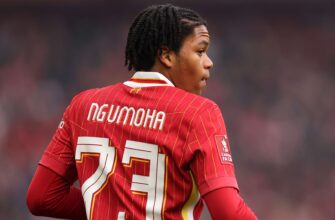The English Premier League, a crucible of passion and unpredictability, launches each season with a fresh wave of anticipation. For analysts and enthusiasts alike, the opening weeks present a unique challenge: making sense of the new campaign with a limited dataset. While the marquee fixtures grab headlines, the true art of early-season prediction often lies in looking beyond the obvious blockbusters and uncovering value where others might not.
- The “Top Clash” Conundrum: Why Prudence Prevails
- Hunting for Hidden Gems: Uncovering Value in Specific Matchups
- The Revitalized Star Against Newcomers
- The Unsung Attacking Defender
- The Underpressure Underdog Slayer
- The Nuance of Early Data: Interpreting the Limited Picture
- Conclusion: A Strategic Lens for the New Season
The “Top Clash” Conundrum: Why Prudence Prevails
It`s tempting to dive headfirst into the colossal clashes that punctuate the early schedule—the derbies, the rivalries, the champions facing their closest contenders. Yet, seasoned observers frequently exercise caution. The reasoning is simple: when two giants collide, especially in the nascent stages of a season, the variables are too numerous. New signings are still bedding in, tactical systems are being refined, and match fitness levels vary. Predicting the outcome of a Tottenham vs. Manchester City or Liverpool vs. Newcastle United fixture in Week One can be akin to throwing darts in the dark; entertaining, perhaps, but rarely precise.
Instead, the focus shifts to scenarios where underlying dynamics offer clearer indicators, even if the teams involved are not always at the very summit of the table.
Hunting for Hidden Gems: Uncovering Value in Specific Matchups
When the grand narratives are too murky, the astute observer zooms in on micro-narratives—individual player matchups, specific tactical vulnerabilities, or the psychological state of a team. Here’s where the real insight often emerges:
The Revitalized Star Against Newcomers
One common archetype for early-season value is the established attacking talent, perhaps looking to regain a previous scoring rhythm, facing a newly promoted side. These teams, fresh from the Championship, often bring enthusiasm but can sometimes be tactically naive or overwhelmed by the sheer pace and quality of top-flight football.
Consider the case of a player like Arsenal’s Bukayo Saka. After a season that might not have met his own high standards for goal tally, the presence of a strong central striker can liberate him. Against a side like Leeds United, newly elevated to the Premier League, Arsenal’s home advantage and attacking fluidity could provide Saka with ample opportunities to find the net. It’s less about a grand team upset and more about an individual talent capitalizing on a favorable defensive matchup. The odds on such a player to score, while not always astronomical, often offer a more reliable return than predicting the exact scoreline of a chaotic top-tier encounter.
The Unsung Attacking Defender
Modern football increasingly blurs traditional positional lines, particularly for full-backs or wing-backs. In teams that expect to dominate possession and push opponents deep, these players often become auxiliary attackers, creating chances, delivering crosses, and even taking shots. This tactical evolution provides an intriguing avenue for predictions.
Take Chelsea, for instance. A team designed for possession dominance will naturally push its wide defenders high up the pitch. While Reece James often garners attention for his attacking prowess, players like Marc Cucurella, operating on the opposite flank, can become unexpected beneficiaries. If Chelsea is projected to control the game against a defensive opponent such as West Ham United, Cucurella`s role could see him venturing into advanced positions, not just to cross, but to attempt shots—both from range and from set pieces in the box. The “two or more shots” market for such a player can sometimes present surprisingly generous odds, reflecting a market that hasn`t fully adjusted to the evolving tactical responsibilities of these positions.
The Underpressure Underdog Slayer
Finally, there`s the scenario where a team with a clear, aggressive game plan faces an opponent grappling with internal issues—perhaps a struggling attack, a leaky defense, or the waning influence of a “new manager bounce.” These matches often provide a battle of contrasting fortunes.
Bournemouth, under a tactically astute manager, can deploy a coordinated press that troubles even established teams, as demonstrated against Liverpool. When they face a team like Wolverhampton, which might be experiencing an attacking drought without a key player and showing defensive vulnerabilities, the Cherries find themselves in a “must-win” scenario. The hunger of a team like Bournemouth, combined with the apparent holes in an opponent`s squad, creates fertile ground for a home victory. It`s an opportunity to back a team showing clear tactical intent against one that appears to be drifting closer to a relegation battle than a comfortable mid-table finish.
The Nuance of Early Data: Interpreting the Limited Picture
Navigating the early Premier League landscape requires more than just gut feelings. It involves a careful interpretation of limited data: pre-season performances, new manager philosophies, transfer window activity, and early glimpses of team cohesion. It`s about recognizing patterns before they become widely obvious, identifying the tactical shifts that empower certain players, and discerning which teams have genuinely improved versus those merely enjoying a honeymoon period.
Conclusion: A Strategic Lens for the New Season
The Premier League`s curtain-raiser is always exhilarating, but for those seeking deeper insights, it demands a strategic approach. By resisting the urge to predict the most high-profile clashes and instead focusing on specific player roles, team dynamics, and tactical advantages in less-heralded fixtures, one can often find a clearer path through the initial fog of a new season. While predicting the beautiful game remains an art as much as a science, the early weeks offer a canvas ripe for bold strokes, especially for those willing to look beyond the glaring headlines and into the tactical intricacies unfolding on the pitch.









